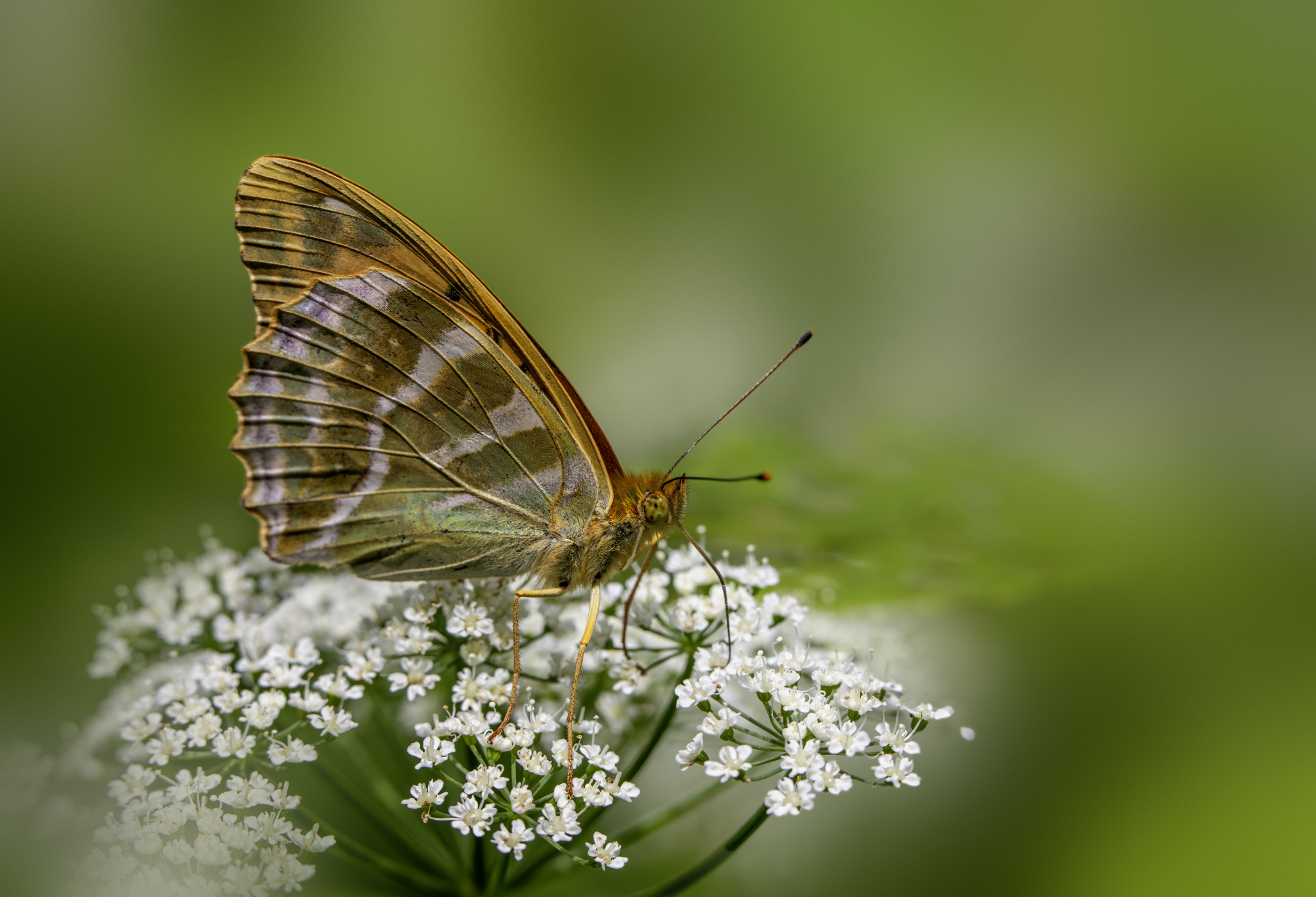🦋 Silver-washed Fritillary (Argynnis paphia)
The Silver-washed Fritillary is one of Europe’s largest and most graceful butterflies, named for the silvery streaks on the undersides of its hindwings. A forest-loving species, it’s known for its powerful flight and preference for sunny woodland glades.
🌈 Identification & Appearance
- Wingspan: 60–75 mm (2.4–3 in) — one of the largest fritillaries in Europe
- Upperside:
- Bright orange with black spots
- Males have four dark sex brands (scent lines) on the forewings
- Underside:
- Hindwings are greenish-brown with distinctive silvery streaks (the “silver wash”)
- Shape: Elegant, elongated wings with slightly scalloped edges
🌍 Distribution & Habitat
- Found across Europe, extending into northern Africa and central Asia
- Prefers deciduous and mixed woodlands, especially oak or beech forests with sunny glades and rides
- Often seen gliding gracefully through dappled woodland light
🌱 Life Cycle & Host Plants
- Flight period: June to August (single generation per year)
- Egg-laying:
- Females lay eggs on tree bark, particularly oak, near violets, the caterpillar’s food source
- Host plants (larval food):
- Mainly Common dog-violet (Viola riviniana) and other wild violets
- Caterpillars:
- Dark with bristly spines, they hatch in late summer and hibernate immediately in bark crevices
- Resume feeding in spring
🐛 Behavior & Ecology
- Strong, fast flyers — males patrol forest rides in search of females
- Nectar sources include:
- Thistles, brambles, burdock, marjoram, and wild privet
- Often rests with wings open to soak up sun, unlike many other fritillaries
- Despite its size, it can be surprisingly elusive among woodland shadows
🛡️ Conservation Status
- IUCN Red List: Least Concern
- Locally common but may decline with:
- Woodland fragmentation
- Loss of open rides and glades
- Benefited by traditional forest management practices like coppicing
🌟 Interesting Facts
- The silver streaks on the hindwings help disrupt the butterfly’s outline, providing camouflage when at rest
- It was once rare in parts of Britain but has rebounded in recent years due to conservation efforts
- Males use their sex brands to release pheromones and attract females during flight chases
🧭 Summary
The Silver-washed Fritillary (Argynnis paphia) is a large, charismatic butterfly of Europe’s woodlands, easily recognized by its vibrant orange wings and silvery undersides. With its strong flight, intricate life cycle, and love for violet-rich forest edges, it embodies the quiet beauty of wild, sunlit woods. Its presence signals a healthy, diverse forest ecosystem.
Visited 85 times, 2 visit(s) today
Views: 477
Subscribe to the newsletter:
